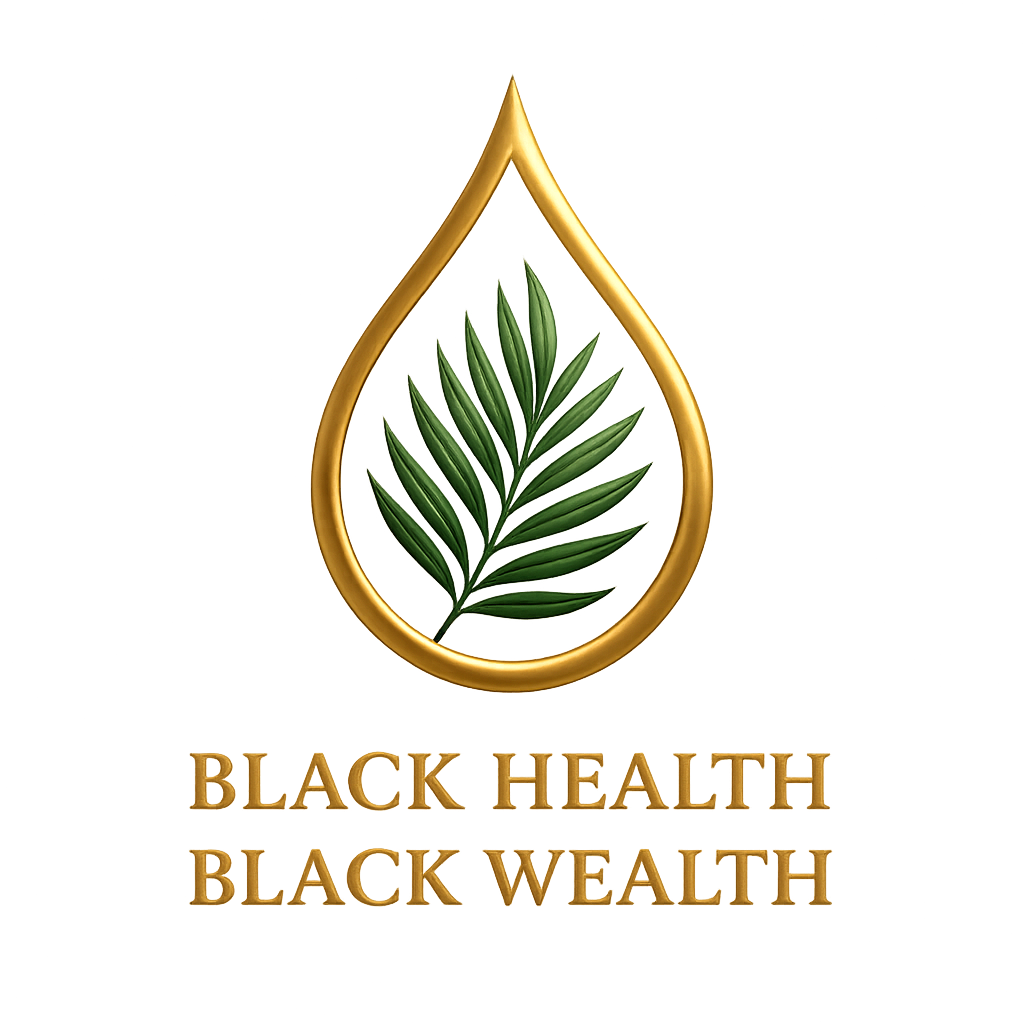The Power of Rest and Rhythm in Public Health and Nonprofit Work
When I think about the work we do at Black health Black wealth, I often reflect on the strategy, innovation, and resilience it takes to move the needle. But lately I have been leaning into something just as vital– rest. The kind of rest that nurtures the body, mind, and spirit while fueling sustainable impact. Not just rest as a break, but rest as a way of being. A radical act of self-honor. In the public health and nonprofit sectors, passion and mission often drive the work, yet that same passion can lead to burnout if we do not intentionally create boundaries and practices that honor our well-being. Rest is not just self-care; it is a professional strategy for building healthier communities and stronger systems. I have learned, sometimes the hard way, that rest is not a luxury. It is a professional strategy. It is a leadership practice. It is community care. It is equity in action. It is a sacred rhythm.
Why Rest Matters in Mission-Driven Work
Stepping back from the constant push of deadlines and demands gave me space to reflect deeply on the broader dynamics of nonprofit, organizational, and public health work. It gave me the clarity I did not know I needed. I noticed how urgency has become normalized, where overextension feels like a badge of honor and this way of reacting become the default. But what happens when we run on empty? What are we modeling when exhaustion becomes the norm?
Burnout doesn’t just affect individuals, but it limits the collective impact of entire organizations. When leaders, staff, and communities are exhausted, the vision of long-term change becomes harder to achieve.
There was a season when I was juggling deadlines, mentee check-ins, personal projects, and my own healing journey. I kept pushing, thinking rest would come later. But my body had other plans. I hit a wall. And in that pause, I heard God whisper: “You’re not just building systems, you’re building legacy. And legacy needs rhythm.”
Now, I’m learning to honor rest, not just for myself, but for the communities I serve, the mentees I mentor, and the systems I’m helping to transform. Because when we lead from depletion, we replicate the very harm we’re trying to heal. But when we lead from restoration, we create space for liberation.
Rest disrupts urgency culture.
We’ve been conditioned to move fast, respond quickly, and always be “on.” But rest slows us down just enough to hear what’s really needed. It makes space for clarity, creativity, and collaboration that isn’t rushed, but rooted.
I remember pausing mid-session during a recent workshop, not because I was tired, but because I sensed the room needed stillness. That pause led to one of the most powerful reflections I have ever had. It reminded me that urgency isn’t always holy. Sometimes, the most sacred work happens in the slow.
Rest changes the narrative from urgent to intentional. It invites us to slow down, listen more deeply, and collaborate more intentionally. By allowing ourselves to step away from constant busyness, we create room for innovation, compassion, and clarity. In truth, rest is not the opposite of productivity; it is the foundation of sustainable productivity. In order to thrive, we must prioritize sustainable rhythms that support ourselves and our communities. We have to build rhythms that honor our humanity and fuel our purpose.
Rest invites us to pause, to listen, to discern. And in that pause, we often find the wisdom we were too busy to notice.
Reframing Balance: From Symmetry to Rhythm
For years, I chased balance, an equal distribution of energy across work, family, ministry, and community. It often felt like a tightrope walk that I was horrible at executing. I was always adjusting, always compensating. I have sense realized that balance, in the way many of us understand it, is an illusion. It is often a myth. Life does not move in perfect symmetry; it moves in rhythms.
Rhythm is spiritual. It’s how our grandmothers moved through the world. It’s how we honor both the grind and the grace.
My grandmother used to hum while she worked, never rushed, always rhythmic. I didn’t understand it then, but now I see she was moving with grace, not grind. That memory has become a compass for me, especially when I feel pulled in too many directions.
As a Black woman rooted in the traditions of music and movement, rhythm feels far more authentic than balance. Rhythm is in our music, our movement, and our prayers. Some seasons call for fast, intense energy, while others demand quiet and stillness. Rhythm gives us permission to ebb and flow without guilt. Rhythm says: there is a time to sow and a time to rest. A time to pour out and a time to be poured into.
This realization shifted everything. Embracing rhythm has helped me release the idea that my worth is measured by constant output. Instead, my worth is tied to alignment with purpose and the intentionality behind my actions. This understanding helps us honor each moment as it comes, and to move with greater grace and sustainability. This shift directly supports health and wealth because it reminds us that thriving requires honoring natural rhythms. It’s how we lead with flow, not just force. It’s how we build lives and legacies that breathe.
Rest as a Tool for Systems-Level Change
In the nonprofit and public health space, urgency often drives decision-making. But meaningful change at the systems level requires something different: patience, strategy, and the willingness to pause. Rest can be an act of resistance in a culture that glorifies overwork. It interrupts the cycle of urgency that too often leaves little room for reflection.
When we rest, we give ourselves permission to reassess what impact really means. Is it about checking boxes on a grant report, or is it about transforming communities for generations to come? Rest allows us to return to the core of our mission with sharper focus. It helps leaders and organizations ask better questions, listen more closely to the communities they serve, and develop strategies that honor long-term sustainability over short-term wins. Rest also makes space for creativity, helping organizations reimagine solutions rather than recycling the same patterns of overwork. These systems-level changes are what create long-term progress for our communities.
The Cultural Connection Between Rhythm and Resilience
For many in the Black community, rhythm has always been central to survival, celebration, and resilience. Whether through music, dance, or the cadence of spoken word, rhythm reminds us of our interconnectedness and adaptability. Bringing that cultural wisdom into how we approach work reframes rest not as absence, but as part of the beat that carries us forward.
In this way, rest becomes cultural preservation and collective power. It reconnects us with ancestral practices that valued rest as nourishment for the soul. Our ancestors understood that thriving requires both labor and stillness. By reclaiming rhythm in our work, we push back against harmful systems that equate worth with constant labor. We affirm that thriving, not just surviving, is our birthright.
Building Rest Into Professional Practice
If rest is both a personal necessity and a professional strategy, the question becomes: how do we build it into our work culture? Some practical steps that I have started include:
Setting boundaries: Protecting time away from work emails and calls.
Normalizing recovery: Encouraging mental health days and breaks without stigma.
Redefining urgency: Asking if everything truly requires immediate action.
Modeling rest as leadership: Leaders who rest give permission for teams to do the same.
Integrating wellness practices: Hosting meditation, journaling, or collective rest sessions as part of organizational culture.
These practices allow organizations to cultivate healthier environments where innovation thrives, and burnout lessens. When employees and leaders feel supported, they bring their best energy to the mission. Rest becomes a collective strength, not an individual indulgence.
The last few years I have taken a few weeks off at the end of the year. No emails. No meetings. Just rest. And you know what? The world didn’t fall apart. In fact, I came back with more clarity, more creativity, and more conviction. That time off has made me realize I am not a machine. I am a miracle.
Rest is how we build systems that heal, not just hustle. It’s how we model a new way of being, one that centers humanity, wholeness, and hope.
Rhythm in Daily Life and Leadership
Rhythm can also transform how we lead. A leader who honors their natural rhythms is more likely to lead with compassion, creativity, and clarity. Instead of forcing productivity in every moment, they know when to push forward and when to step back. This rhythm-based approach makes room for teams to flourish at their own pace while still moving toward shared goals.
On a personal level, adopting rhythm means giving yourself permission to rest when your body and spirit call for it. It could be as simple as taking a walk outside, pausing for deep breathing between meetings, or setting aside quiet time each week to reset. Small choices, repeated over time, shift how we show up in every part of life. These practices ripple outward, strengthening not only individuals but the collective work for Black health Black wealth.
-
Balance assumes symmetry across all areas of life, but rhythm embraces the natural flow of high and low energy seasons, making it more realistic and sustainable.
-
Yes. Rest improves clarity, decision-making, and collaboration, which strengthens organizations and makes systemic change more achievable. This directly impacts the future of our communities.
-
Start by creating no-meeting days, encouraging breaks, reassessing deadlines, and integrating wellness practices that remind teams rest is a part of productivity.
-
Leaders who model rest show that sustainability matters. Their example reduces burnout within teams and sets the tone for healthier, more innovative organizational cultures.
Rest Is an Investment in Change
Rest is not a luxury—it is a strategy for sustainable leadership and impactful change. By shifting from the illusion of balance to the practice of rhythm, we can honor both our humanity and our purpose. This reframing helps us build stronger communities, healthier organizations, and more sustainable futures.
If you are ready to explore healthier ways to lead, work, and create impact, we invite you to take the next step. Book our consulting services today and let us help you build strategies that honor both your mission and your well-being.
Reflection Prompt
What would shift in your leadership, your team, or your community if rest became part of your rhythm?
Take a moment. Breathe. Journal. Share. Let this question guide your next decision, your next meeting, your next season.

